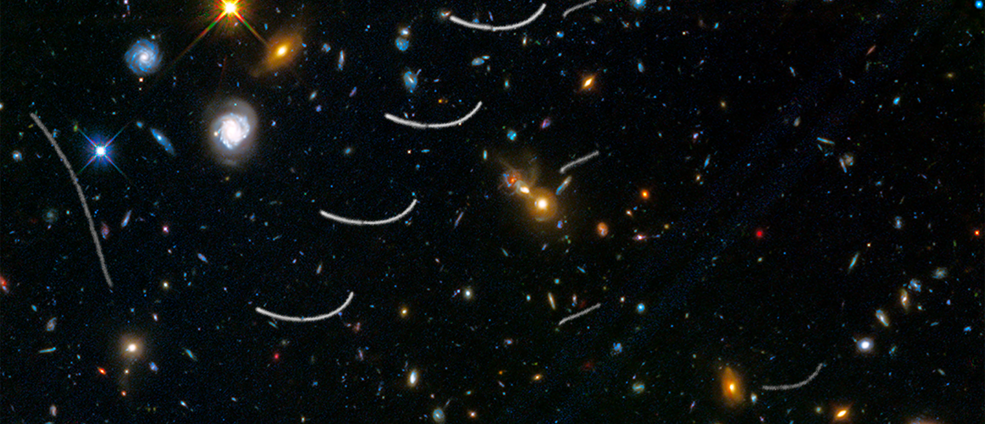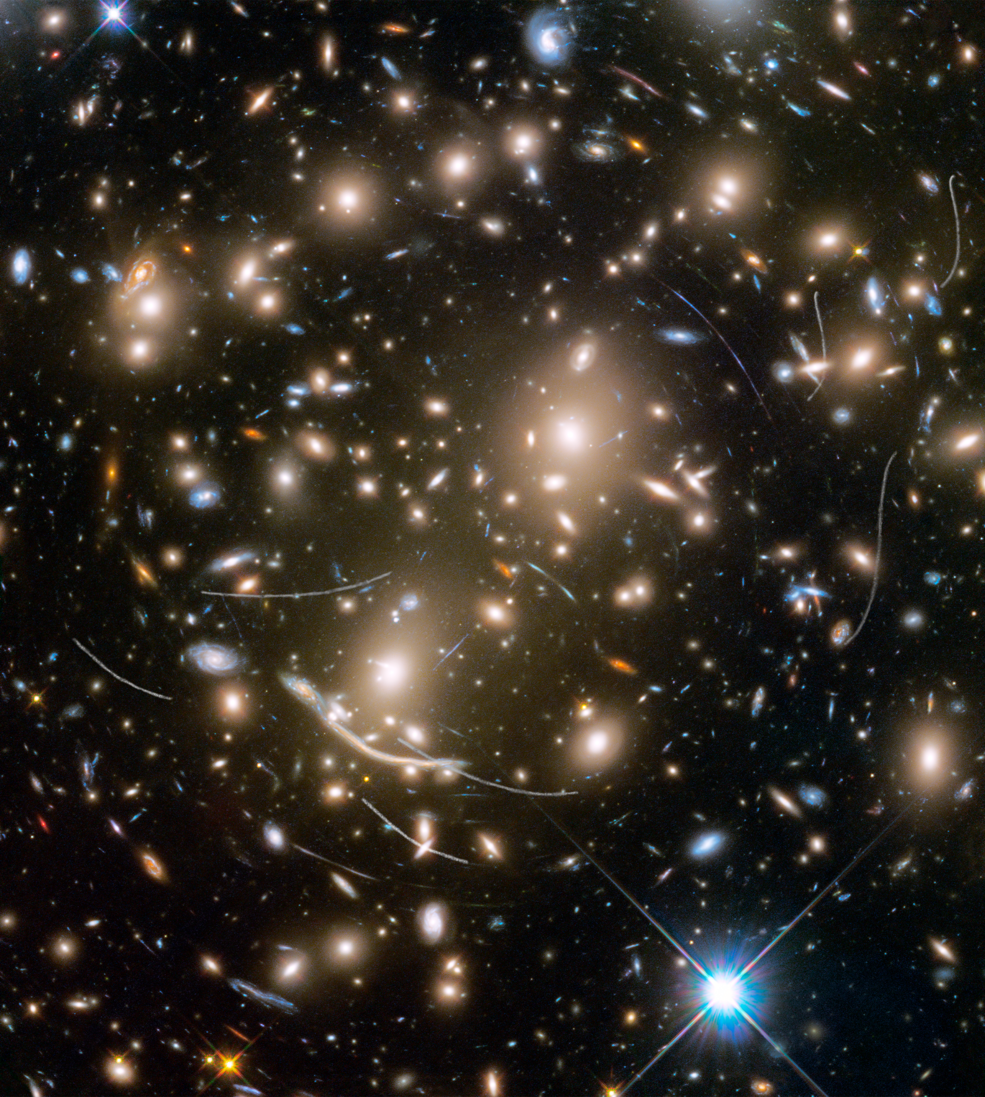Several asteroids made a “photobomb” for Hubble, preventing photographs of distant galaxies.

In ordinary photographs, especially those taken on vacation, there are often unauthorized individuals who are trying to get into the frame in order to spoil the picture. Such photos are called “photo bombs”. As it turned out, not only people, but also asteroids are doing the same. So, the Hubble telescope failed to photograph distant galaxies that astronomers want to explore, since some of them turned out to be closed by asteroids . Despite the fact that they are located at a distance of about 300 million km from the Earth, compared with the galaxies, these objects can be called "neighbors" of "Hubble". And that's just the "neighbors" and hit the frame.
The images in question were taken as part of the Frontier Fields program. Thousands and thousands of galaxies can be distinguished in each photograph, including massive yellow and equally massive blue. Most of all in the photo of small blue dots are also galaxies, millions of light-years distant from the Earth. Red objects are considered the most distant - usually there are not so many of them in astronomical photographs. But it is they who are of the greatest interest to scientists, because they make it possible to clarify some points in the long process of the evolution of the Universe.
The photo also shows c and s-shaped artifacts, which are the tracks of asteroids passing in front of the telescope lens. The exposition of images of this kind is very large, so asteroids have time to “check in” in the photo. In addition, scientists usually combine several shots of the same area to get more details. As a result, the "tails" are very long. Of the seven asteroids that hit the frame, experts have identified only two. The rest left too weak a trace so that they can be recognized.
The picture itself is a great demonstration of such an effect as parallax. This is the name given to the change in the apparent position of an object relative to a distant background, depending on the position of the observer. By the way, Parsec is the parallax of the corner second. The extra-systemic distance measurement unit used in astronomy. In the case of Hubble, the parallax manifests itself in the form of arcuate traces of the motion of asteroids. In the photographs, the tracks are curved because the Hubble is orbiting around the earth. At the same time, more distant objects remain stationary with respect to asteroids.

The Frontier Fields program is aimed at studying large galactic clusters, in order to find out the role of dark matter in the history of the Universe. Clusters of galaxies are the largest structures in the Universe. They are formed by the influence of gravity. In some clusters are thousands of galaxies, the space between which is filled with intergalactic gas. It strongly emits in the X-ray range, so that such clusters are detected not only in the visible spectrum. According to a number of scientists, objects in such clusters are nearby not only due to the gravitational influence, but also due to dark matter.
One of the most interesting for science clusters - Abell 370 . It is located in the constellation Kita. Signs of the existence of this cluster were discovered as early as the 1980s, when in the pictures the scientists saw a bright arc in the lower left part of the astronomical photographs of the sky in the constellation of China. As it turned out, this is a gravitationally-lensed image of a separate galaxy, which is located further away from the cluster. The arc is made up of two distorted images of this galaxy. The Abell 370 has very powerful gravity, which affects the propagation of light from more distant objects. Hundreds of Hubble hours were spent studying the cluster.
Frontier Fields allowed astronomers to obtain a huge amount of data on distant galaxies from the Earth and their clusters. Specialists, using the information transmitted by Hubble, try to understand what happened during the so-called “Dark Ages” of the Universe, when outer space was filled with hydrogen, and the relict radiation at that time went into the infrared radiation range, so that in the visible range everything became "black." What exactly happened in the Universe then, what processes allowed, as a result, to form for it the way it is today - for the time being a mystery. But "Dark Ages" gradually brighten due to the constant work of scientists.
All Articles